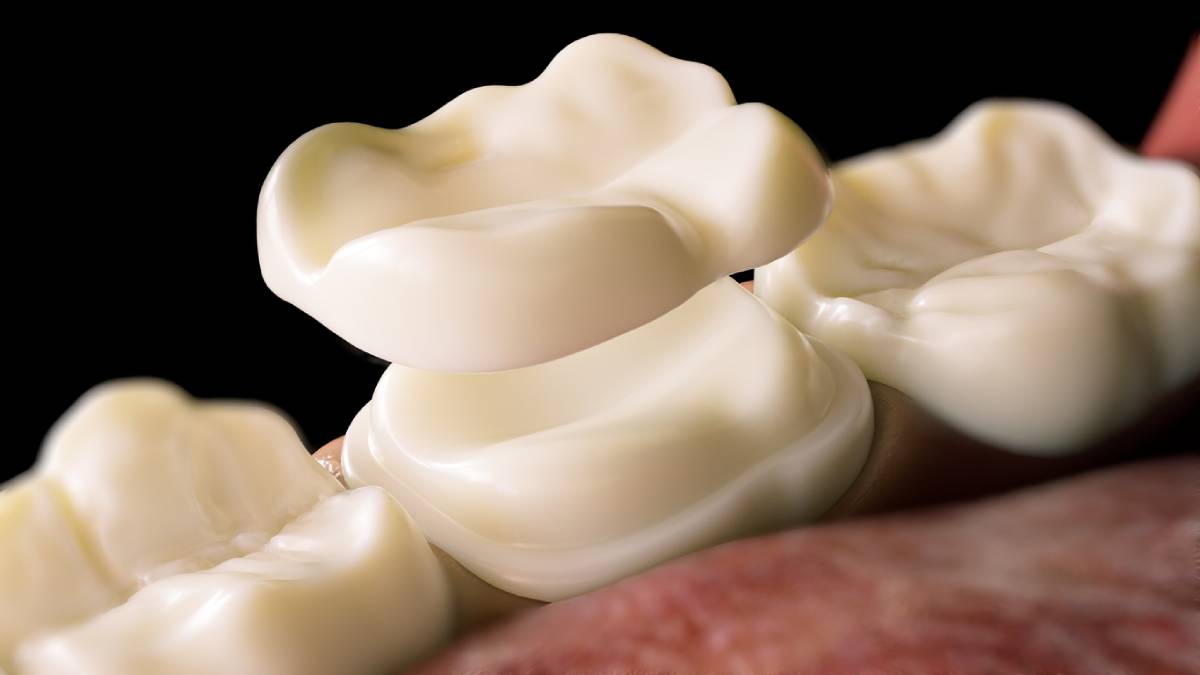Dental crowns are one of the methods used in treating tooth decay. They are also used by a dental crowns specialist to reinforce and protect a damaged tooth. Dental crowns are typically made of highly durable materials, but still they are not invincible and some issues might occur over time. In this article we will answer the question: “can dental crowns get decay?”
Can Dental Crowns Get Decay?
A dental crown is made of artificial materials, so it can not develop decay. However, tooth decay can still occur in the tooth underneath the crown, especially in the small portion of the tooth where the bottom of the dental crown meets the gums. If decay occurs underneath a dental crown, it requires immediate attention, as it can result in serious oral health issues like infection, gum disease, or even tooth loss.
What Causes Tooth Decay Under a Crown?
One of the most common causes of tooth decay under a crown is insufficient oral hygiene. If you do not brush and floss your teeth thoroughly enough, food particles and bacteria remain between the teeth, leading to plaque and tartar buildup. Often, just brushing your teeth at home might not be enough to maintain good oral health. Regular checkups at your dentist’s office and professional cleanings are necessary to avoid tooth decay or other issues with your dental crowns.
Another reason for tooth decay under a crown is that your crown does not fit properly. If the crown is loose, food particles, acid, and bacteria can get under it and cause cavities and decay. Once again, regular checkups will help to spot and fix a loose dental crown before it can result in significant damage to the tooth underneath it.
When the crown is old, the adhesive or sealant that connects the crown to the tooth can start breaking down. When this happens, food residue and bacteria can get underneath the crown, leading to tooth decay.
Symptoms of Tooth Decay Under a Crown
If you have any of the following symptoms, visit your dentist as soon as possible to prevent further complications. These symptoms can be a sign of infection or tooth decay underneath the dental crown:
- Your gums bleed when you brush or floss around the crown
- The gums around the crown are swollen, red or inflamed
- Sensitivity to hot and cold temperatures or to air is increased in the tooth covered by a crown
- You experience pain in the area of the dental crown
- You have toothache in the tooth underneath the crown
- There are gray or brown spots at the base of the tooth with the crown
How Is Tooth Decay Underneath a Crown Diagnosed?
Once you make an appointment with a full-service dentist, they will perform a thorough exam and take an X-ray to determine if there is an infectious process or tooth decay underneath the crown. Depending on the examination results and the severity of the case, your dentist will decide what treatment is most suitable for you.
How Is Tooth Decay Underneath a Crown Treated?
First of all, in most cases, the existing crown will be removed to get access to the tooth. After the tooth is treated, if possible, a new crown will be installed. Your dentist might employ some of these options for treating tooth decay that occurs underneath a crown:
Dental Fillings
Treating a tooth with a filling without removing a crown is only possible if the small cavity is at the crown’s margins. In other cases, a dentist might not be able to have sufficient access to the cavity. If not all the decay is removed, there is a risk of further complications. This is why only minor cavities can be treated in this way.
Root Canal Therapy and Crown Replacement
If tooth decay can not be reached while keeping the crown in tack, the crown will be removed and the infected pulp will be cleaned. Then the canals will be sealed and a new crown installed.
Tooth Extraction
Sometimes, the decay underneath a crown progresses to the point when it is impossible to save the tooth. In this case, the only option for treatment is to extract the decayed tooth. Your dentist might suggest options for restoration after the tooth extraction, such as dental bridges or dental implants. Losing a tooth is unpleasant and causes many additional issues. But it can be avoided if you consult your dentist without delay if you notice any signs of tooth decay underneath your dental crown.
Make an Appointment Today
Remember that the most important factor in successfully treating tooth decay underneath a crown is how soon the tooth is treated. If you notice any of the symptoms of tooth decay beneath a crown, do not hesitate to call Turquoise Dental and make an appointment with one of our specialists. We are looking forward to welcoming you to our office.




